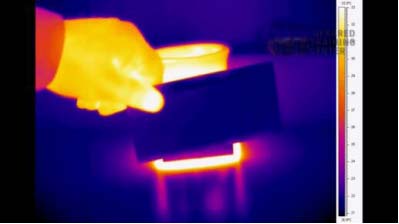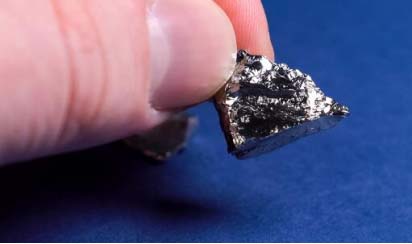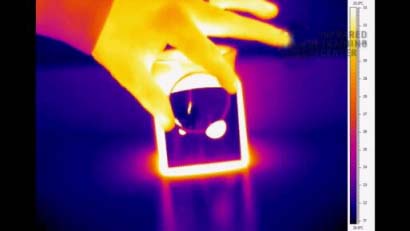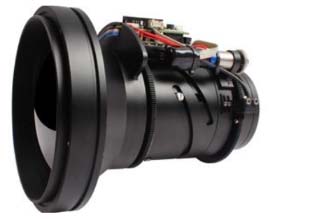What Are IR Camera Lenses Made of?
Aug. 03, 2022
IR camera lenses are made out of substances like germanium, or other materials with low absorption in the infrared spectrum.
But why is it necessary to use these specialized components instead of a more common substance like glass?
Infrared cameras don’t work the same way as regular, visible light cameras. Regular cameras function more or less the same way as a human eye, receiving radiation in the visible light spectrum and turning it into an image. Infrared cameras, on the other hand, make images from heat, aka infrared or thermal radiation, instead of visible light.
Infrared radiation behaves very differently from visible light. Because of this, infrared camera lenses need to be made from different materials than regular cameras. The properties for a given material in the visible world might have no bearing on its properties in the infrared world—glass, for instance, is extremely transparent to radiation in the visible spectrum, but in infrared, glass is completely opaque:

The opposite can be true. Germanium, a semi-metallic element similar to silicon, is completely opaque in the visible world:

but nearly 100% transparent in the infrared:

It’s for this reason that CLZ camera lenses are made of germanium or other materials that are transparent in the infrared spectrum.
What is Germanium?
It is the third element of the fourteenth column of the periodic table. It is classified as a metalloid and is similar in properties to the other metalloids near it in the periodic table which are silicon and arsenic. Ge atoms have 32 electrons and 32 protons with 4 valence electrons in the outer shell.
Under standard conditions, Germanium is a hard, shiny, silvery-grey solid that is very brittle. It is one of the few elements that expands when it freezes or turns solid. As a metalloid, it has both metal and non-metal qualities. It also is a semiconductor, which means it has electrical conductivity between an insulator and a conductor. This characteristic has led to it being used in electronics.
What is Germanium used for?
The majority of germanium is used in optical systems. This is because Germania (GeO2) has good qualities for working with light and lasers. It is used in applications like cameras, fibre optics, and microscopes, and infrared optics.
● Camera Lenses – used in the manufacture of wide-angle camera lenses. It gives special properties to the glass.
● Alloys – it can be useful to add to other metals.
● Fluorescent Lamps – it is one of the elements on the inside of the fluorescent bulbs.
● Chemotherapy – scientists are studying germanium for use in chemotherapy to help treat cancer.
● Bacteria – some compounds that include germanium are useful in killing bacteria while not harming animals.
● Electronics – it can be combined with silicon to make silicon germanium (SiGe), solar cells, and some metal alloys.
● Plastics – it is also used as a catalyst to produce some types of plastics.
Germanium Optics
Both monocrystalline Germanium and polycrystalline Germanium can be used for the manufacturing of optical components; at CLZ Precision Optics, we tend to specialise in monocrystalline Germanium.
Ge in the range of 2-12μm is the most commonly used material in the production of spherical lenses and windows for high efficiency infrared in the imaging system operating in both 3-5 and 8-12μm.
Its wide transmission range and visible opacity make it highly suitable for IR laser applications. It also acts as a long pass filter for wavelengths greater than 2 µm. In addition, germanium is inert to air, water, alkalis, and many acids. The high refractive index and minimal surface curvature of Ge are perfect for manufacturing low-power imaging systems.
Germanium is extremely sensitive to temperature, and absorption is so large that it is nearly opaque at 100 °C and completely non-transmissive at 200 °C.
When handling optics, always wear gloves. This is especially true when working with germanium, as dust from the material is hazardous. For your safety, please follow all proper precautions, including wearing gloves when handling these windows and thoroughly washing your hands afterward.

Germanium from CLZ Precision Optics
Lenses – optical lenses made of polished germanium. These lenses are rugged and resistant to corrosion and are ideal for harsh environments and applications where there is constant exposure to the elements.
Windows – an optical window that is opaque to UV and visible light but has a broad transmission range in IR.
Our Germanium Lenses
Germanium lenses are used for the production of durable IR systems because they are optimally suited for focusing IR radiation in the range of 2-12 µm. In order to achieve the best possible transmission, our lenses have a PVD coating. Due to their remarkable properties, our germanium lenses are often used in camera lenses for infrared heat measurement.
Our germanium lenses are characterized by:
● Small chromatic aberration
● High mechanical stability
● High transmission
● Their use in laser systems or IR instruments
● Useful working range: 2-12 µm
The product specifications of our germanium lenses:
● Transmission Range: 2 – 12 µm
● Refractive Index: ~ 4,0 from 2 – 14 µm
● Density: 5,33 g/cm-3
● Coefficient of Thermal Expansion (10-6/°C): 6,1
CLZ Precision Optics also offers Germanium prisms, germanium filters, germanium mirrors and germanium optics.
If you’re looking for Germanium glass, you can rest assured that our products will provide you with the best value for money. Our highly skilled technicians ensure all components meet our high quality standards and our germanium products have a high precision rate and can be customized to suit your needs specifically.
Previous: 7 Factors When Choosing a Thermal Camera
Next: A Basics of Optics (Ⅰ)





















